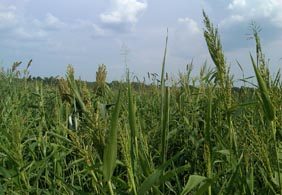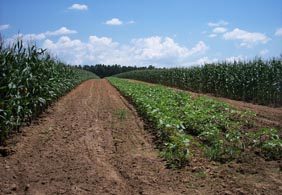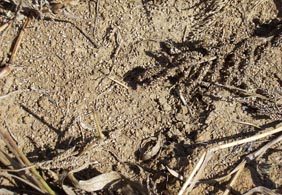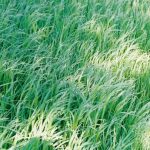Managing for Doves: Next Stop – Wingshooting

It’s early July and if you don’t already have your dove fields prepared, now is the time. This is an exciting time of year because many exhilarating activities are just around the corner, such as college football, fellowship in the dove field, and the anticipation of the upcoming deer season. Managing for dove on Westervelt hunting leases can sometimes be challenging due to the lack of large open fields commonly associated with successful dove hunting. However, with a little creativity and foresight, successful dove hunts can be achieved in many cases.
Although dove fields are typically large (5+ acres), a small field in a great location will enable you more success than a large field in a poor location. Thus, it is important to know your surroundings and learn where birds are naturally attracted to on your property. Great locations can include powerlines, pipelines, daylighted roads, and especially fresh clearcuts with lots of bare ground and snags/debris for birds to perch on.
Fresh clearcuts can provide some of the most exciting dove hunting opportunities available. They provide some of the most desired naturally occurring food sources for dove, such as woolly croton (a.k.a. goatweed or doveweed), ragweed, foxtail, panicgrass, pokeweed, crabgrass, and pigweed. The dead snags often left within and around clearcuts provide the ideal perch and are a magnet for attracting birds. Identifying areas with these preferred species combined with a little pre-season scouting and you may be in for the hunt of a lifetime.

If your club has a powerline or pipeline right-of-way (ROW) you are in business. Powerline ROWs are ideal for planting dove fields because doves will perch on the line (which also provides a stationary target for the novice!). Also, industrial timberland guarantees an abundance of pines on the property for doves to loaf in during the day. Soil samples should always be obtained before planting to determine the correct amount and type of fertilizer to use. This will save money, protect your seed investment, and increase plant vigor and seed production.
Browntop millet, dove proso millet, sunflower, corn, and grain sorghum are all preferred species for dove. Browntop (25 lbs/acre broadcast) is one of the more vigorous plantings and has the shortest maturation time of approximately 60 days, which allows you to plant as late as August and still produce a crop. Dove proso millet (30 lbs/acre) requires approximately 80 days to mature. Sunflowers (20 lbs/acre) take 110 days to mature, while grain sorghum (10 lbs/acre) and corn (15 lbs/acre) mature in about 120 and 145 days, respectively. Thus, match your desired crops with the planting date to ensure enough growing season is available for plants to mature. Planting a variety of species with varying maturation lengths will increase your ability to attract and hold doves for longer periods. However, single species plantings will provide herbicide options and facilitate manipulation (e.g., mowing, haying, etc.) of plants as they mature to begin attracting birds.

If you have not already starting preparing your dove field, millet or buckwheat (40 lbs/acre) is recommended to ensure plants mature by dove season. Just before you plan to hunt the field (1-2 weeks), it will be important to manipulate your plantings (e.g., mowing, light disking, haying) to scatter seed and provide much needed bare ground for birds to land in. It is also wise to manipulate different sections of the field at different times throughout the season, leaving some of the crop standing to manipulate for future hunts.
It is also recommended to disk strips near your plantings to expose the soil for dove to dust in and access seed. Later, wheat can be top-sown within the disked strips to further increase their attraction. However, be sure to follow state regulations when hunting over top-sown wheat to ensure the field is legal. This information is readily available on your state agency’s website.
Hopefully the information above will assist you with creating successful and exciting dove hunting opportunities on your hunting grounds. Be sure to check state guidelines for harvest information and other information pertaining to dove hunting. As always, be safe and enjoy the social atmosphere associated with wing shooting!


